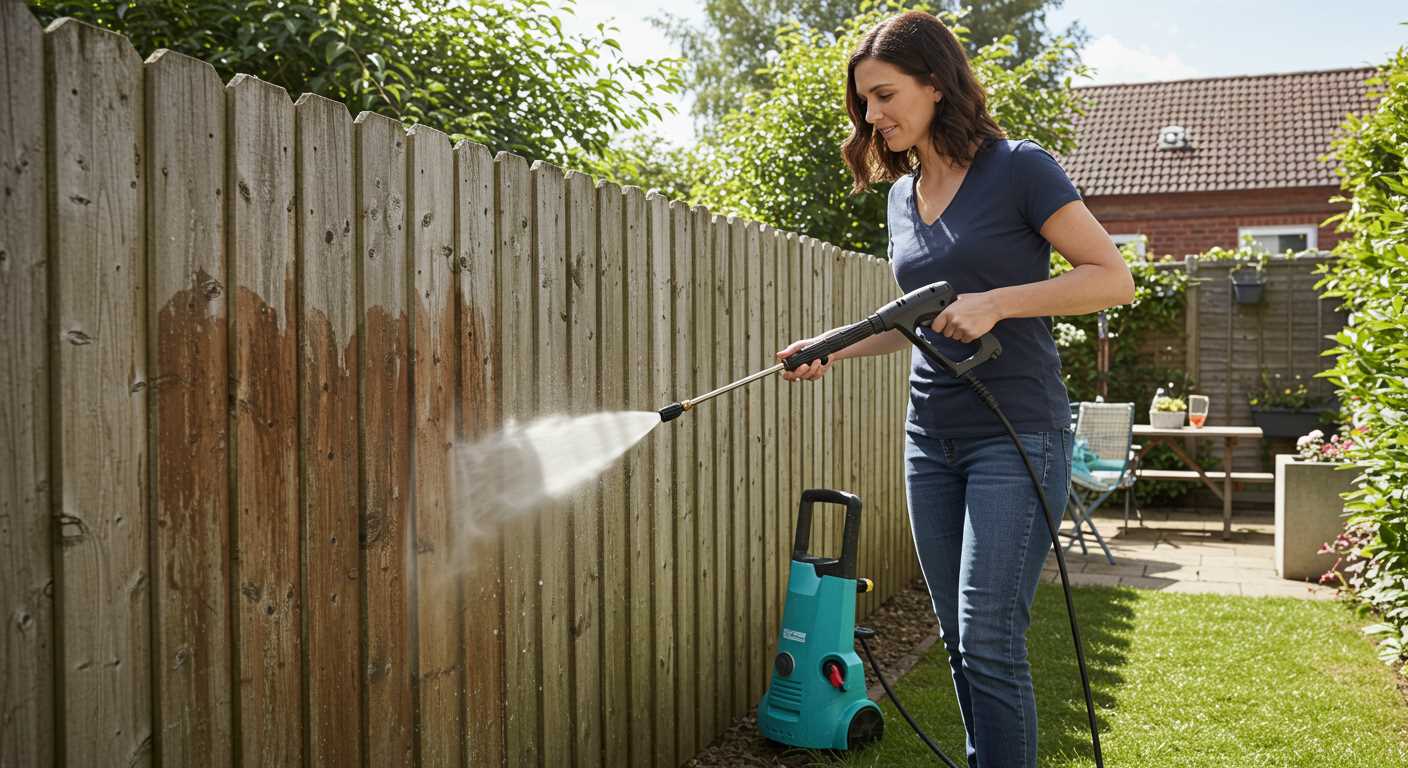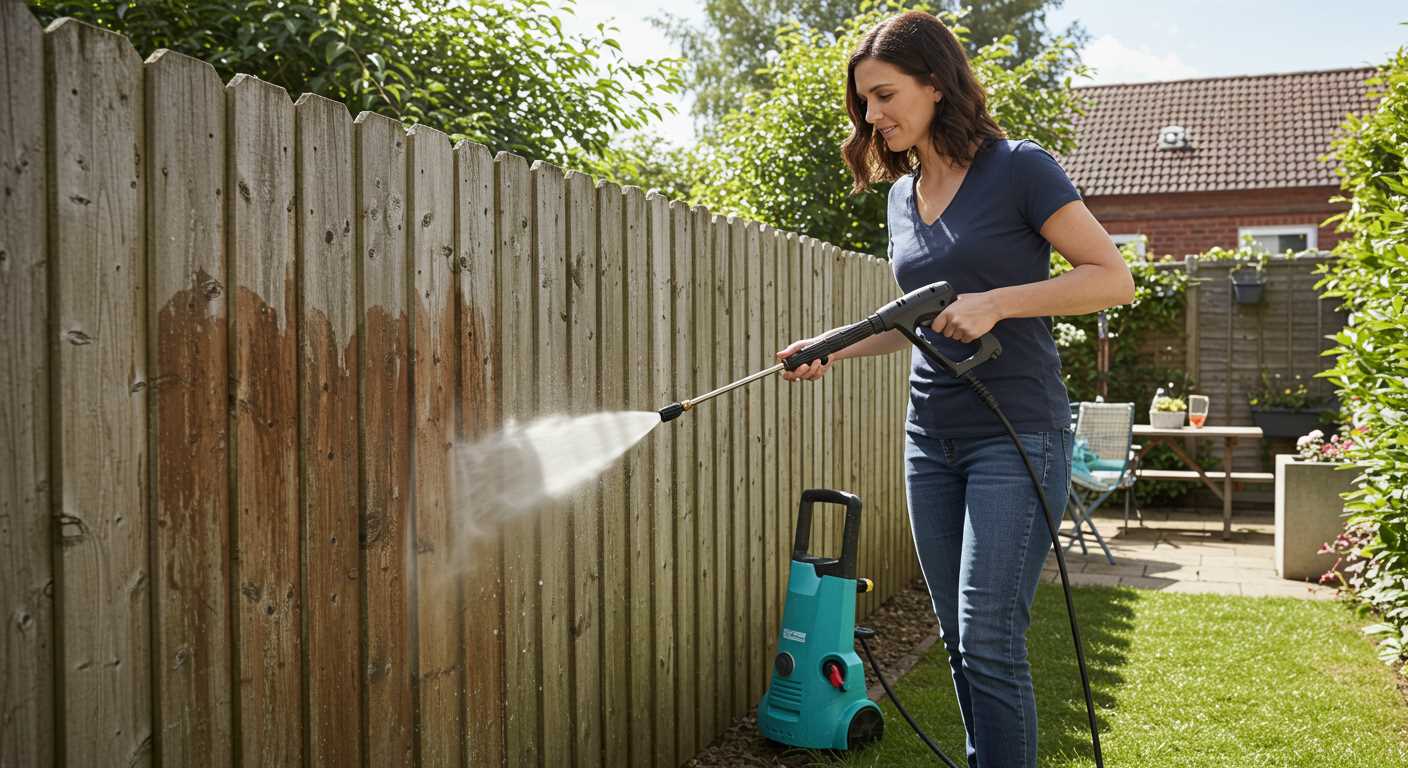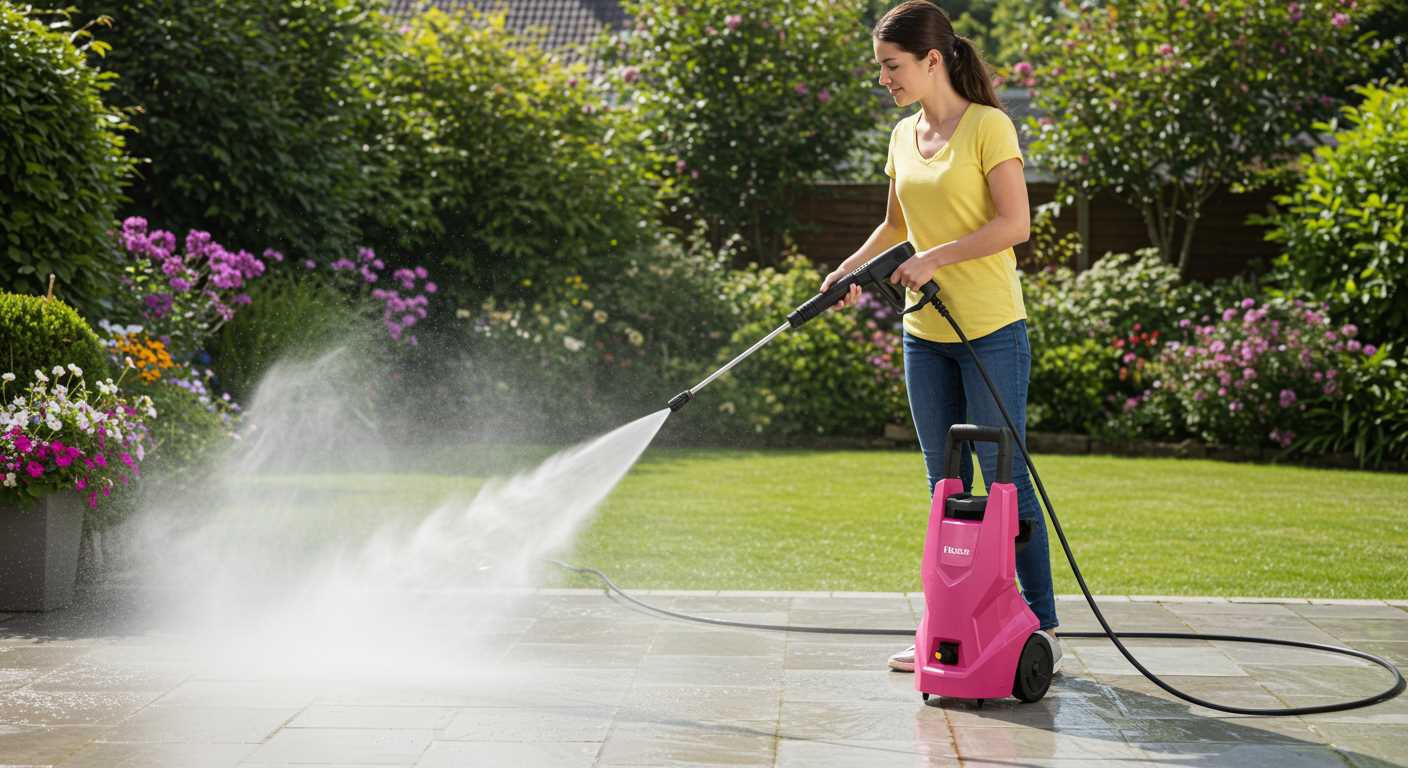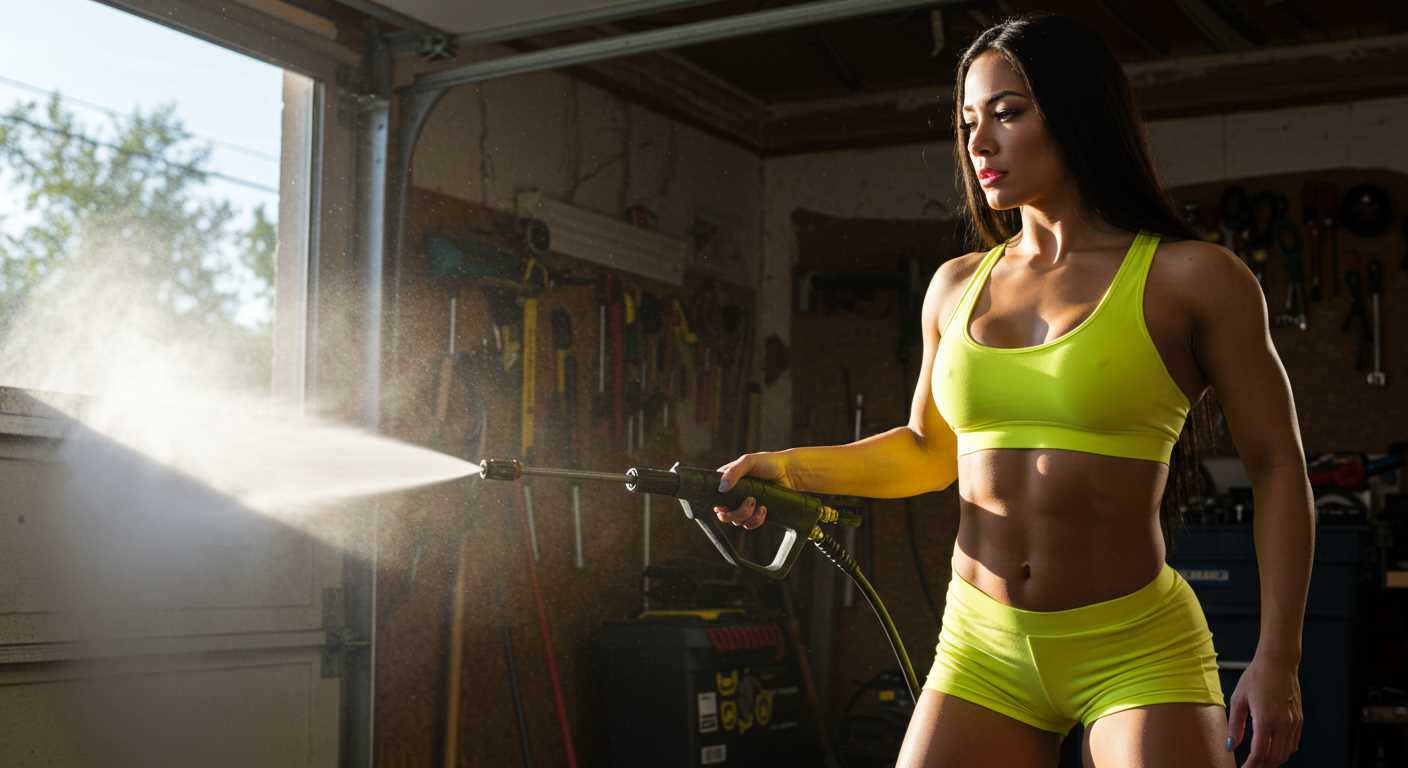




To achieve optimal cleaning results, consider the fundamental components of high-pressure cleaning devices. These machines utilize electric motors to generate powerful water jets, essential for tackling tough grime and stains on various surfaces. I recommend examining the power specifications closely; a model with a minimum of 1500 watts is typically adequate for most residential tasks.
Water is drawn from a source, often a garden hose, and then directed into the pump. This pump, usually a piston type, compresses the water, increasing its pressure significantly. In my experience, a device with adjustable pressure settings can adapt to different cleaning tasks, allowing for gentle rinsing of delicate surfaces or a more forceful spray for stubborn dirt.
One standout feature to check is the nozzle design. Interchangeable nozzles can provide versatility, enabling you to switch from a wide spray pattern to a concentrated jet. During my time testing various models, I found that devices with quick-connect nozzles save time and enhance convenience.
Lastly, don’t overlook the importance of safety features. Automatic shut-off systems and thermal relief valves can prevent overheating and prolong the lifespan of your unit. Investing in a quality machine with these features can save you both time and money in the long run, ensuring that your cleaning tasks are not only effective but also safe.
Understanding the Components of an Electric Pressure Cleaner
Familiarity with the parts of a high-pressure cleaning device can significantly enhance your maintenance routine and troubleshooting skills. Knowing what each component does allows for more effective use and care.
Key Components
The primary elements include the motor, pump, nozzle, and hose. Each plays a critical role in generating and directing water under pressure.
| Component | Function |
|---|---|
| Motor | Drives the pump and converts electrical energy into mechanical energy. |
| Pump | Increases water pressure, enabling effective cleaning. |
| Nozzle | Controls the shape and intensity of the water stream. |
| Hose | Transfers water from the unit to the cleaning surface. |
Additional Features
Some models include integrated detergent tanks, which simplify the cleaning process. I’ve often found that having the detergent tank built-in saves time and effort, especially when targeting tough stains.
Another feature worth considering is adjustable pressure settings. This allows for versatility–whether you’re removing grime from a patio or cleaning a delicate car surface. I’ve encountered many situations where adjusting the pressure has made all the difference between a successful clean and damage to the surface being treated.
How High Pressure is Generated by Motors
To achieve high pressure in cleaning devices, motors play a pivotal role. They convert electrical energy into mechanical energy, driving a pump that compresses the water. The heart of this process lies in the design of the motor and the pump mechanism itself.
Motor Operation and Its Influence on Pressure
When the motor starts, it spins a rotor within a magnetic field, generating rotational force. This motion is transmitted to the pump, typically a diaphragm or axial piston type, which compresses water. The design of the pump is critical; a multi-stage pump can significantly enhance pressure output by allowing water to pass through multiple stages of compression, each adding to the overall pressure.
Choosing the Right Equipment for Optimal Performance
Not all motors are created equal. Higher RPM (revolutions per minute) ratings often lead to increased pressure, but efficiency matters too. A motor that runs at a lower RPM but is built for torque can deliver excellent pressure without overheating. In my experience, selecting a device with a quality motor and pump combination is key to achieving the desired cleaning power.
The Role of the Pump in Water Pressure Creation
The pump is the heart of high-pressure cleaning equipment, directly affecting the output pressure and water flow rate. When I first began my career testing these machines, I quickly realised that without a robust pump, even the most powerful motor would fall short in performance. The pump is responsible for increasing the water velocity, transforming ordinary tap water into a forceful jet capable of tackling tough grime.
In my experience, pumps typically fall into two categories: axial and triplex. Axial pumps are simpler and often found in entry-level models. They are lightweight and can handle basic cleaning tasks but tend to wear out faster. Triplex pumps, on the other hand, offer durability and higher efficiency, making them the preferred choice for serious users. I’ve seen triplex pumps last for years, even after heavy use, which speaks volumes about their construction and design.
Pressure generation occurs as the pump draws in water and compresses it through a series of pistons. The pivotal aspect here is the pump’s ability to create a pressure differential. When the water is forced through a narrow nozzle, the velocity increases significantly, resulting in high pressure at the outlet. I remember a particular instance while testing a model equipped with a triplex pump; the difference in cleaning power was astonishing compared to others I had worked with. It cut through years of grime on a driveway in a fraction of the time.
Regular maintenance of the pump is crucial. I’ve encountered numerous cases where users experienced decreased performance due to debris clogging the inlet or worn-out seals. Flushing the system after use can prevent sediments from building up, ensuring longevity and consistent performance. Keeping an eye on the pump’s oil levels, if applicable, also plays a significant role in its efficiency.
Understanding the pump’s role in pressure creation not only enhances your cleaning experience but also extends the lifespan of the equipment. Investing in a quality pump is paramount for anyone serious about maintaining their property or running a cleaning business. In my years of experience, I’ve always advised choosing models with a reputable pump brand, as it often dictates the reliability and effectiveness of the entire unit.
How Nozzles Affect Spray Patterns and Pressure
Choosing the right nozzle can drastically change your cleaning tasks. Each type of nozzle alters the water flow and pressure, enabling you to tackle various surfaces and dirt types effectively. Here are the common nozzle types and their impacts:
- Zero Degree Nozzle: Produces a concentrated, high-pressure stream. Ideal for stubborn stains on durable surfaces like concrete but can damage softer materials.
- 15 Degree Nozzle: Offers a wider spray while maintaining significant pressure. Great for heavy-duty tasks such as stripping paint or cleaning brickwork.
- 25 Degree Nozzle: This nozzle provides a fan-shaped spray suitable for medium-duty jobs, including cleaning decks and driveways. It balances pressure and coverage effectively.
- 40 Degree Nozzle: A gentle spray for light cleaning tasks like washing vehicles or cleaning windows. It spreads the water over a larger area, reducing the risk of damage.
- Soap Nozzle: Designed for applying detergent, this nozzle uses lower pressure to mix soap into the water effectively, preparing surfaces for deeper cleaning.
When I worked with various models, I found that switching nozzles often made the difference between a mediocre clean and a sparkling finish. For instance, using a 15-degree nozzle on an old patio transformed its appearance with minimal effort.
It’s crucial to match the nozzle to the task. For example, if you’re cleaning a car, opt for a wider spray like the 40-degree to avoid damaging the paintwork. If you’re in the market for a small pressure washer for cars, ensure it comes with a variety of nozzles.
Experimenting with different nozzles can enhance your efficiency. Always remember to begin with a wider spray to assess the surface’s tolerance before moving to a more concentrated stream for stubborn grime.
Electric Pressure Washer Safety Features Explained
Always check the GFCI (Ground Fault Circuit Interrupter) before using your machine. This feature cuts off power in case of a short circuit, protecting you from electric shocks. I remember a time at a friend’s house when the GFCI saved the day; the outlet had a minor fault, and the washer shut down immediately, preventing a potential hazard.
Look for models equipped with thermal relief valves. These valves prevent overheating by releasing water when the temperature exceeds a safe limit. I once had a unit that overheated during a long cleaning session, but the thermal relief valve activated, allowing me to continue without damage to the motor.
Another critical feature is the safety lock on the trigger. This prevents accidental discharge of water, especially in households with children. I’ve seen kids accidentally trigger machines without this feature, which can lead to accidents. A simple lock can prevent such incidents.
Always consider units with a low-pressure setting. This allows for safer cleaning on delicate surfaces without the risk of damage. I’ve encountered situations where I had to switch settings frequently to protect surfaces, and having that option readily available made my job easier.
Regular inspections of hoses and connectors are vital. Look for signs of wear or damage to avoid leaks and potential injuries. On one occasion, I neglected a small crack in the hose, which led to an unexpected spray while I was cleaning, resulting in a slippery area that could have caused a nasty fall.
Lastly, always use the recommended personal protective equipment (PPE). Safety goggles, gloves, and sturdy footwear can shield you from debris and high-pressure water. I’ve learned this the hard way; a stray stone caught me off guard once, and now I never skip my PPE.
Maintenance Tips for Longevity of Your Pressure Cleaner
Regularly check and replace the high-pressure hose if you notice any signs of wear or leaks. A compromised hose can lead to decreased performance and potential safety hazards. In my experience, even a small crack can escalate into a major issue quickly.
Ensure that water filters are cleaned frequently to prevent clogs. I’ve had instances where neglecting this simple task resulted in reduced flow and increased strain on the motor, ultimately shortening its lifespan.
After each use, disconnect the water supply and run the machine for a minute to clear out any residual water. This prevents stagnant water from causing internal corrosion. I remember a time when I skipped this step, and it led to rust in the pump, which was costly to repair.
Use the right detergent specifically formulated for these types of machines. I’ve seen too many individuals use household cleaners, which can damage internal components. Always refer to the manufacturer’s recommendations.
Store your equipment in a dry, protected area. Extreme temperatures can affect the motor and seals. I once had a colleague leave his unit in a shed over winter, and it didn’t survive the frost. Good storage can make a significant difference.
Check electrical connections regularly for signs of wear. Corroded connections can lead to performance issues. I often use a contact cleaner on connectors to keep them in top condition.
Finally, maintain the pump oil levels as recommended by the manufacturer. I’ve seen pumps fail simply due to inadequate oil. Regular checks and changes ensure smooth operation and extend the life of the unit.
Common Issues and Troubleshooting Electric Pressure Cleaners
Encountering a malfunctioning unit can be frustrating. One common issue is the machine not starting. First, ensure the power cord is plugged in securely and check for any tripped breakers. If the outlet is functional, inspect the power switch for any signs of damage.
No Water Flow
If no water is flowing, examine the garden hose for kinks or clogs. Ensure that the water supply is turned on. Clean the inlet filter to prevent debris from obstructing the flow. If everything looks good but water still doesn’t flow, the pump might need checking for air locks or damage.
Pressure Fluctuations
Inconsistent pressure can stem from a clogged nozzle. Remove the nozzle and clean it thoroughly. If the nozzle is clear, inspect the hose for leaks or cracks that could disrupt the flow. It’s also wise to check the connections to ensure they’re tight and secure.
Another issue I’ve encountered is a machine that runs but doesn’t build pressure. This can often be a sign of pump failure. If you hear a strange noise, it might indicate that the pump gears are damaged. At this point, consider consulting a professional or referring to the manufacturer’s guidelines for repair.
For those looking to maximise their cleaning efficiency, pairing your equipment with the best air compressor for da sander can enhance your overall performance during cleaning tasks.
Regular maintenance such as checking the oil level and cleaning filters can prevent many common issues. Always remember to store the unit properly during off-seasons to avoid wear and tear.
FAQ:
What components make up an electric pressure washer?
An electric pressure washer typically consists of several key components: a motor, a pump, a water inlet, a spray wand, and hoses. The motor powers the pump, which draws water from a source and pressurises it. The pressurised water then travels through the hoses and out of the spray wand, allowing users to clean surfaces effectively. Some models may also include additional features like detergent tanks or adjustable nozzles for different cleaning tasks.
How does the pressure washer generate high pressure?
The high pressure in an electric pressure washer is generated by a pump, which can be either a piston or diaphragm type. When the motor runs, it drives the pump, forcing water through a narrow outlet. This restriction increases the water’s velocity, resulting in higher pressure. The pump can typically reach pressures ranging from around 1000 to 3000 PSI, depending on the model and its specifications.
Can I use an electric pressure washer for different cleaning tasks?
Yes, electric pressure washers are versatile tools suitable for a variety of cleaning tasks. They can be used for washing cars, cleaning patios, removing mildew from decks, and even cleaning outdoor furniture. Many models come with interchangeable nozzles that adjust the spray pattern and pressure, allowing users to customise the pressure for different surfaces and cleaning needs. It’s important to choose the right nozzle and pressure level to avoid damaging delicate surfaces.
What safety precautions should I take when using an electric pressure washer?
When using an electric pressure washer, several safety precautions should be observed. First, always wear protective gear, including goggles and gloves, to protect from debris and high-pressure water. Ensure that the power cord is in good condition and avoid using it with wet hands or in wet environments to prevent electrical shock. Keep a safe distance from the surface being cleaned, and never point the spray wand at people or animals. Additionally, check the manufacturer’s guidelines for specific safety instructions related to your model.
How can I maintain my electric pressure washer for longevity?
Maintaining your electric pressure washer is crucial for ensuring its longevity and performance. Regularly check and clean the filter to prevent blockages. After each use, it’s a good idea to run clean water through the machine to clear out any detergent residue. Inspect the hoses and connections for signs of wear or leaks, and replace them if necessary. Store the pressure washer in a dry place and protect it from extreme temperatures. Following the manufacturer’s maintenance recommendations will also help keep your machine in good working order.





.jpg)


